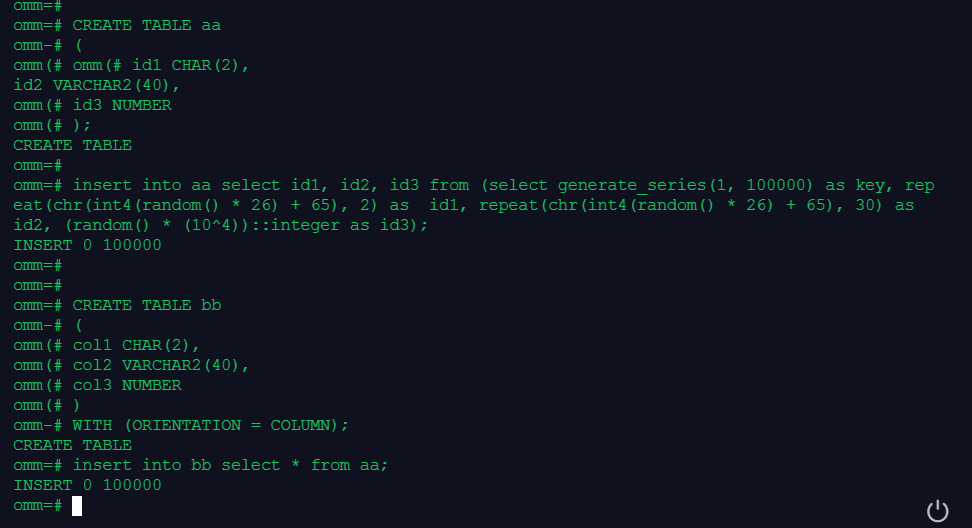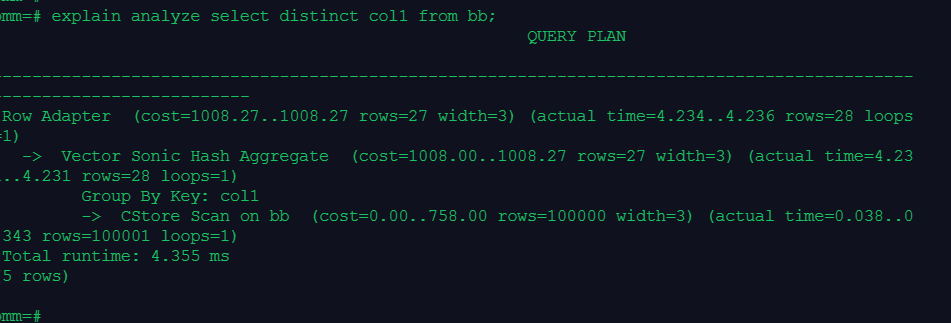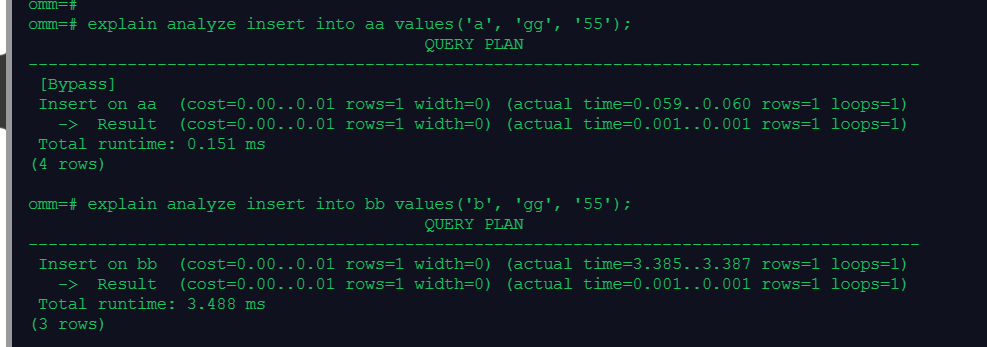21.1 打卡第21天
👉openGauss SQL学习参考资料
https://opengauss.org/zh/docs/2.1.0/docs/Developerguide/SQL%E8%AF%AD%E6%B3%95.html
学习目标
学习openGauss存储模型-行存和列存
行存储是指将表按行存储到硬盘分区上,列存储是指将表按列存储到硬盘分区上。默认情况下,创建的表为行存储。
行、列存储模型各有优劣,通常用于TP场景的数据库,默认使用行存储,仅对执行复杂查询且数据量大的AP场景时,才使用列存储
课程学习
连接数据库
#第一次进入等待15秒 #数据库启动中... su - omm gsql -r复制
1.创建行存表
CREATE TABLE test_t1 ( col1 CHAR(2), col2 VARCHAR2(40), col3 NUMBER );复制
–压缩属性为no
\d+ test_t1 insert into test_t1 select col1, col2, col3 from (select generate_series(1, 100000) as key, repeat(chr(int4(random() * 26) + 65), 2) as col1, repeat(chr(int4(random() * 26) + 65), 30) as col2, (random() * (10^4))::integer as col3);复制
2.创建列存表
CREATE TABLE test_t2 ( col1 CHAR(2), col2 VARCHAR2(40), col3 NUMBER ) WITH (ORIENTATION = COLUMN);复制
–压缩属性为low
\d+ test_t2;复制
–插入和行存表相同的数据
insert into test_t2 select * from test_t1;复制
3.占用空间对比
\d+复制
4.对比读取一列的速度
analyze VERBOSE test_t1; analyze VERBOSE test_t2;复制
–列存表时间少于行存表
explain analyze select distinct col1 from test_t1; explain analyze select distinct col1 from test_t2;复制
5.对比插入一行的速度
–行存表时间少于列存表
explain analyze insert into test_t1 values('x', 'xxxx', '123'); explain analyze insert into test_t2 values('x', 'xxxx', '123');复制
6.清理数据
drop table test_t1; drop table test_t2;复制
课程作业
1.创建行存表和列存表,并批量插入10万条数据(行存表和列存表数据相同)
CREATE TABLE aa
(
id1 CHAR(2),
id2 VARCHAR2(40),
id3 NUMBER
);
insert into aa select id1, id2, id3 from (select generate_series(1, 100000) as key, repeat(chr(int4(random() * 26) + 65), 2) as id1, repeat(chr(int4(random() * 26) + 65), 30) as id2, (random() * (10^4))::integer as id3);
CREATE TABLE bb
(
col1 CHAR(2),
col2 VARCHAR2(40),
col3 NUMBER
)
WITH (ORIENTATION = COLUMN);
insert into bb select * from aa;

2.对比行存表和列存表空间大小
\d+

3.对比查询一列和插入一行的速度
analyze VERBOSE aa;
analyze VERBOSE bb;

explain analyze select distinct id1 from aa;
explain analyze select distinct col1 from bb;


explain analyze insert into aa values('a', 'gg', '55');
explain analyze insert into bb values('b', 'gg', '55');

4.清理数据
drop table aa;
drop table bb;

评论
 点赞
点赞









